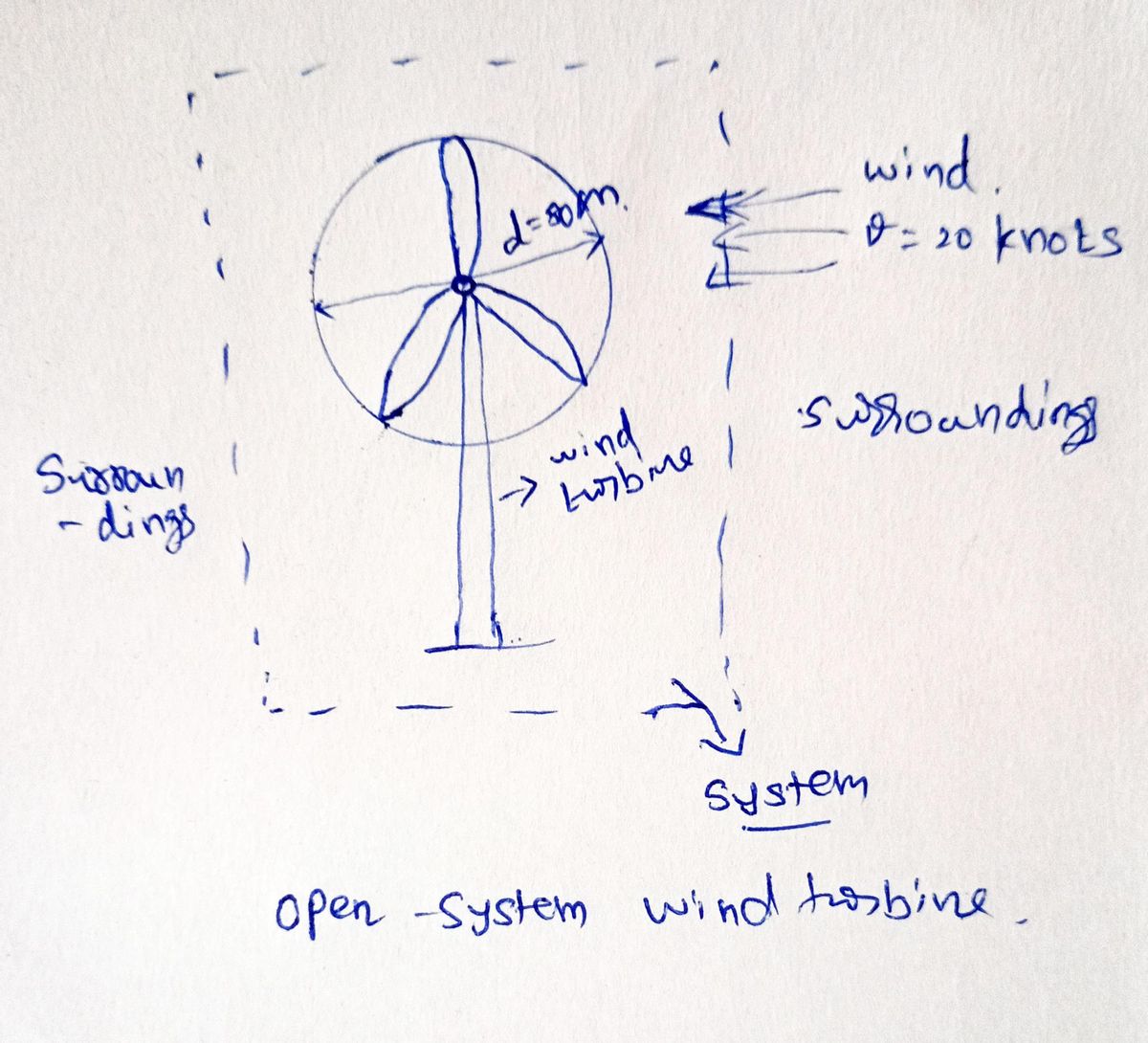Wind provides an increasingly important source of renewable energy in certain locations of the world. In fact, wind was the second largest renewable energy source worldwide (after hydropower!) and provided more than six percent of global electricity in 2020; in the U.S. that number was 8.4%. Suppose that wind turbines can convert up to 30% of the kinetic energy of incoming wind blowing through their blades into electricity (i.e., useful shaft work). In the following, we will analyze the power output of a wind turbine with a diameter of d = 80 m placed at an offshore location where the wind blows steadily at an average speed of 20 knots. Explicitly state all relevant approximations or assumptions. (a) Draw a diagram that includes appropriate elements for assessing the amount of work extracted from the wind turbine. Your diagram should have annotated any known or approximated proper- ties. What is your system and surroundings? What kind of boundary divides these two? Hint: In terms of system setups, there are at least two reasonable approaches. You may choose your system to be a fixed amount of air that you follow during the process (this would represent a closed system). Otherwise, if you choose a system defined by a control volume surrounding the wind turbine, you should adopt an open-system approach. (b) How much electrical work can be produced from the wind turbine? (c) By how much must the wind be slowed down to produce the amount of work indicated above? Do you suppose this wind speed is an over- or underestimate and why?

In order to assess the power output of a wind turbine, we can set up the system in two different ways: as a closed system or an open system.
Closed system: In this approach, the system is defined as a fixed amount of air that passes through the wind turbine blades. The surroundings would be the rest of the atmosphere outside of the air that passes through the wind turbine. The boundary between the system and surroundings would be the wind turbine blades.
Open system: In this approach, the system is defined as a control volume surrounding the wind turbine. The surroundings would be the rest of the atmosphere. The boundary between the system and surroundings would be the surface of the control volume.
In either approach, the wind turbine is assumed to have a diameter of 80 m and is located in an offshore location where the wind blows steadily at an average speed of 20 knots. It is also assumed that the wind turbine can convert up to 30% of the kinetic energy of the incoming wind into useful shaft work.
The following schematic diagram of the wind turbine depicts the open-system wind tubrine set-up. The dotted-box is the boundary between the system and the surroundings.

Note: This is a simplification, as the actual conversion efficiency of wind turbines can depend on various factors, such as the size and design of the turbine, wind speed, and wind direction.
Step by step
Solved in 3 steps with 1 images









